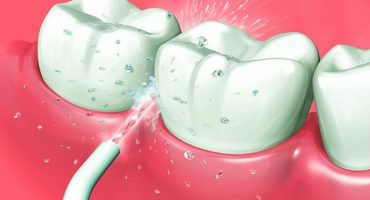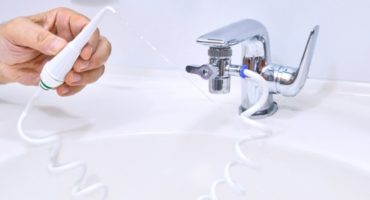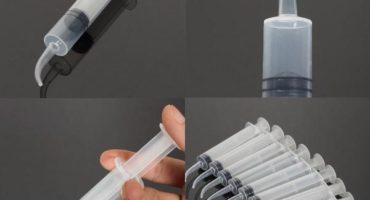About existence oral irrigator many already know. It greatly simplifies and improves the effectiveness of dental and gum care. But, the fact that there is an absolutely similar device for cleaning the nose and paranasal sinuses, many hear for the first time. Using an irrigator to rinse the nose, in turn, helps to cope with a large number of ENT diseases, as well as perform the necessary hygiene, removing all dust, allergens and pathogens from the mucosa.

Using a nose irrigator helps you deal with your nose
What is a nose irrigator?
A nose irrigator is a device designed to cleanse nasal passages and sinuses from mucus, at the same time as dust, chemicals and pathogens that are trapped inside by hairs are removed. Depending on the embodiment, it may have certain design features, but at the same time its main parts are a container for fluid washing the nasal cavity and a nozzle, which is designed to provide fluid supply directly into the nasal passage. The main indications for using a nose irrigator are:
- prevention of inflammatory diseases of the nose and paranasal sinuses;
- epidemiological preventive measures;
- prevention of allergic rhinitis;
- prophylaxis of adenoids;
- prevention of nasal mucosa in dusty conditions.
But, like any other method of washing your nose, use irrigator there are a number of contraindications, the main of which are:
- inflammation in the inner ear or acute otitis media;
- increased frequency of nosebleeds;
- absolute obstruction of the nasal passages. In this case, before using the device, it is necessary to instill vasoconstrictor drops in the nose, which will allow breathing through the nose;
- neoplasms in the nose.

An increased frequency of nosebleeds is a contraindication for using an irrigator
In addition, according to experts of the American College, whose main activity is the study of immunology, asthma and allergies, constant washing of the nose can cause negative effects even in people who do not have contraindications for performing this procedure. So on the basis of the studies they were able to conclude that the constant washing of the sinuses with the cleansing of mucus from them leads not only to the removal of harmful bacteria from the nasal passages, but also to the beneficial antifungal, antibacterial and antiviral agents. The consequence of this may be a more frequent occurrence of sinusitis in humans. But since the saline solution, which is most often used as a washing liquid, is not harmful in itself, this procedure can and should be performed during the treatment, but the duration of this course should not exceed 2-3 weeks.
Today, in the consumer market, this device is presented both in the form of an independent mechanical device, and is an additional function in other electrical devices, namely:
- an aspirator;
- inhaler;
- oral irrigator.
Each of them has its own characteristics in the design and method of application.The result of use is identical - mucus and all foreign particles and microorganisms are washed out of the nose.
Mechanical nose irrigator
An independent device for washing the nose is a plastic flask with a special nozzle, a cap with a tube and a valve. Complete with the device there are two types of nozzles intended for use by adults or children. The method of its application is as follows:
- a solution for washing the nose is poured into a plastic flask. It can also be replaced with a composition prepared from 300 ml of purified warm water and 2.7 g of sea salt;
- an age-appropriate nozzle is put on the irrigator;
- the body leans forward, and the head is slightly to the side;
- the irrigator nozzle is inserted into the nasal opening from above, while holding the flask upside down, after which the valve is pressed;
- after the procedure is repeated in the same order for the other nasal opening.

Mechanical nose irrigator
At that moment, when the nozzle of the irrigator is inside the new hole and the solution flows out of it, breathing should be carried out only through the mouth. In this case, the liquid will, passing and washing the maxillary sinus, leak from another nasal opening. Together with the liquid, all mucus will be removed from the nose. In addition to saline solution for washing the nose with such an irrigator, decoctions of medicinal plants, such as chamomile, St. John's wort, calendula or a series, are suitable. But they can be used only if an allergic reaction has never occurred to a person with these components. In allergic rhinitis, regardless of the factor provoking it, the use of decoctions of medicinal plants for washing the nose is unacceptable. Also, for the preparation of the composition for use in an irrigator, you can use furacilin tablets, which are previously thoroughly diluted in warm boiled water.
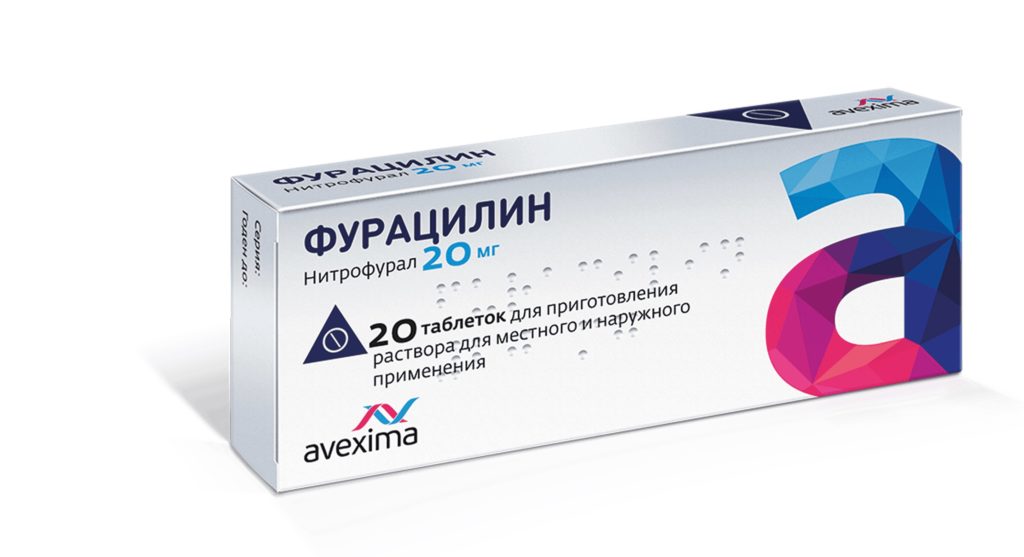
Furatsilinum solution is applicable to a nose irrigator
Aspirator irrigator
The principle of collaboration between an irrigator and an aspirator is to irrigate the nasal cavity with liquid, followed by its removal. In this case, the irrigator sprays the liquid poured into one of the containers of the device with a thin stream, providing cleaning of even the most inaccessible places, and the aspirator, after changing the nozzle, sucks it into another container. To provide the possibility of choosing the intensity of the fluid stream, a special controller is located on the device body. Therefore, this device can be used by both adults and children.
The operation of such irrigators can be performed both from the electric current network, and from rechargeable batteries, which must be periodically charged. All containers, hoses and nozzles can be disconnected from each other and boiled, providing the necessary disinfection and maintaining the device in perfect cleanliness. In addition to the choice of power, the use of an irrigator in accordance with age should be carried out with an appropriate nozzle.

Aspirator Irrigator
Inhaler Irrigator
An inhaler is a device designed to spray drugs in the form of a fine aerosol. Such a conversion is achieved by exposing the fluid to a sufficiently powerful air stream generated by the compressor through a small hole in the nozzle. In most cases, the use of an inhaler is necessary for the treatment of lower and upper respiratory tract. In order for such a device to be used as an irrigator, the nozzle on it is changed. At the same time, the capacity of the liquid that it contains in itself increases in volume and, with it, an opening for air supply.
Unlike an aspirator, such a device cannot remove mucus from the nose. This version of the device is more like a mechanical device with the only difference that the air flow is formed not by pressing the valve, but directly by the compressor of the device.Depending on the age of the person, when using an irrigator, the corresponding nozzle is also selected, which helps to control the flow of fluid into the nasal passages.

For washing the nose in the inhaler, a special separate nozzle is used with an increased volume of the liquid container
Nasal flushing using an oral irrigator
An irrigator for the oral cavity, which can work both from the mains and on the battery, allows simultaneous use of a toothbrush and toothpaste to provide complete care for teeth, gums and the entire mucous membrane. Its principle of operation is to supply liquid poured into a container under pressure through the handle on which this or that nozzle is worn. One of the types of such nozzles is for washing the nose.
Currently, there are two types of nozzles for irrigator for the nose. One of them allows you to irrigate the mucous membrane with large drops of water, thereby eliminating congestion, and with it swelling. The second is for rinsing the nasopharynx, which provides fluid in the form of fog with the formation of very small drops that settle on the mucosa and have a positive effect on it. In the latter case, a solution of sea salt is most often used to wash the nose.
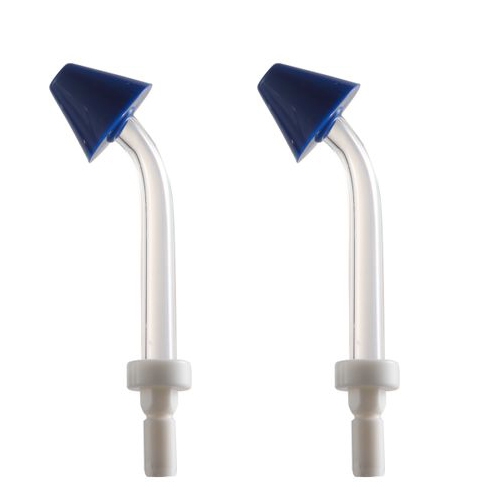
Nozzles in the mouth irrigator
Popular models of nose irrigators
The most popular nose irrigators related to their various types can be called:
- Revyline Nasal 300 is a mechanical irrigator that comes with a 300 ml fluid reservoir, screw cap with tube and 2 interchangeable nozzles for adults and children. The cost of such a device is 500 rubles;
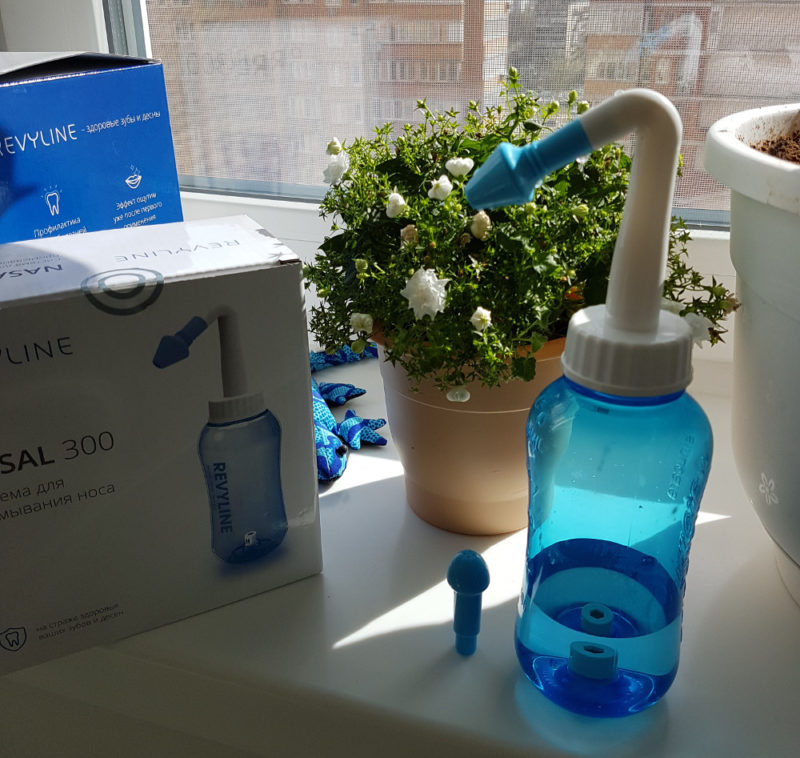
Revyline Nasal 300
- Lella F1000 is an electric inhaler-irrigator with a continuous operation of 60 minutes. In the operating mode of the irrigator, a capacity of 10 ml is used, the full flow of liquid from which is carried out in 20 minutes. The particle size of the aerosol in this case reaches 48 microns. The average cost of Lella F1000 4600 rubles;
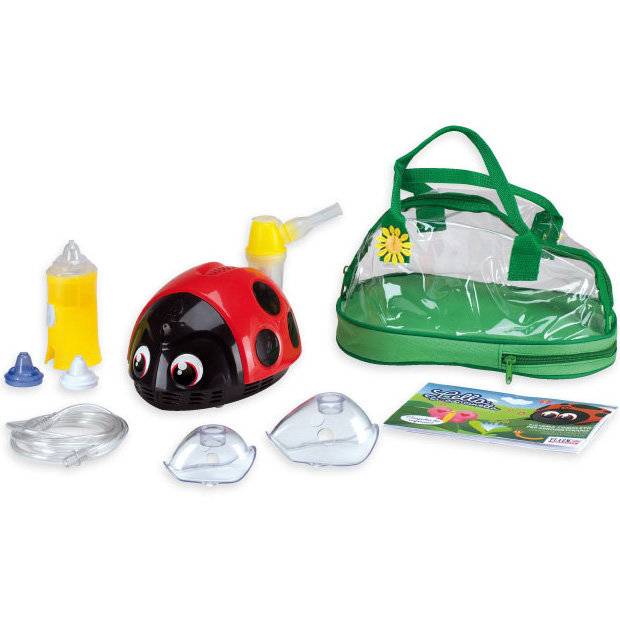
Lella F1000
- Donfeel OR 820M is a stationary device designed for oral hygiene, as well as for washing and cleaning the nose. The last procedure can be performed using one of the two appropriate nozzles. The size of the device is 17x15x22 cm, which will provide the opportunity to conveniently place it in the bathroom. The jet pressure is adjustable in the range of 150-620 kPa. Thanks to which everyone will be able to choose the best exposure to liquid. The average cost of such a device is 4250 rubles.
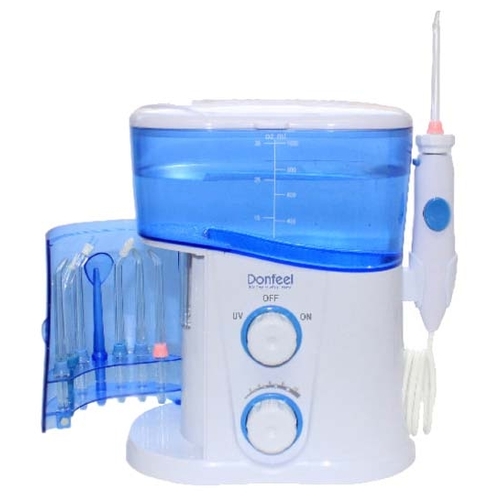
Donfeel OR 820M
In most cases, all manufacturers of oral irrigators include a nozzle for cleaning the nose in the kit or imply a further separate purchase. This allows you to have a device that helps cope with various ENT diseases for those who are used to taking care of their health in general. But at the same time, do not forget that the use of an irrigator for the nose is best started after consulting a doctor who will establish the need for this procedure and the presence of possible contraindications in a person.

